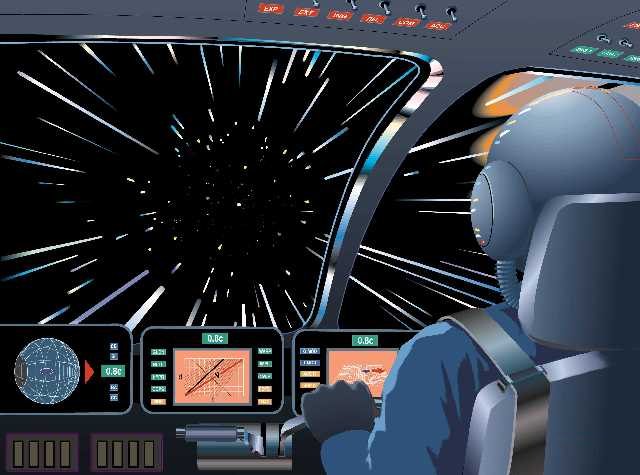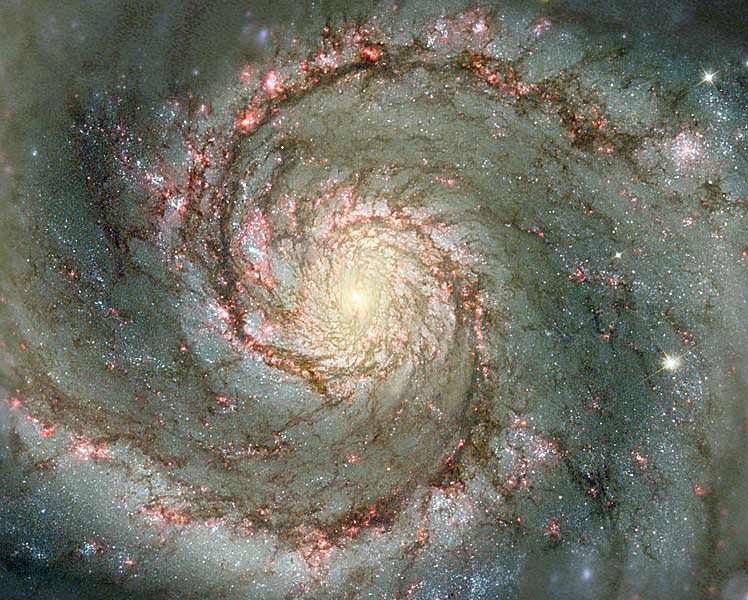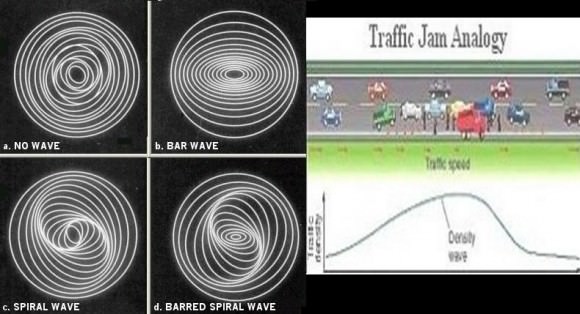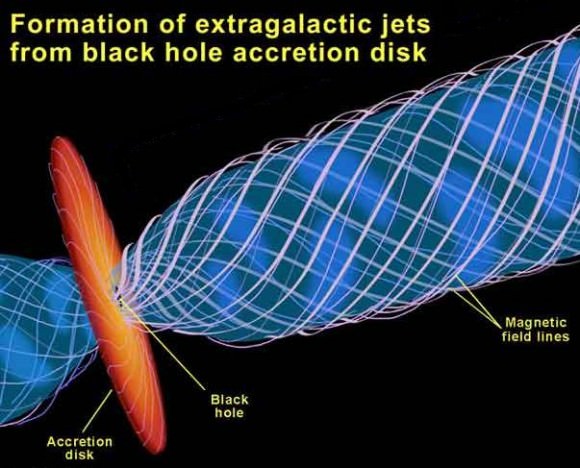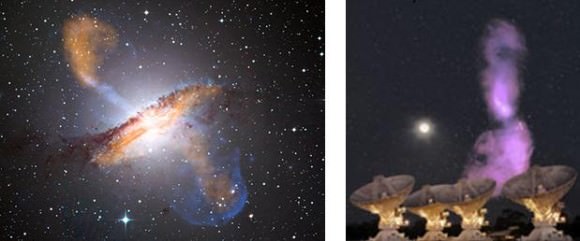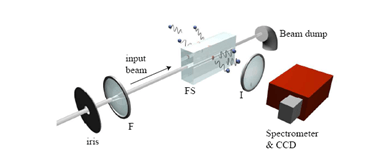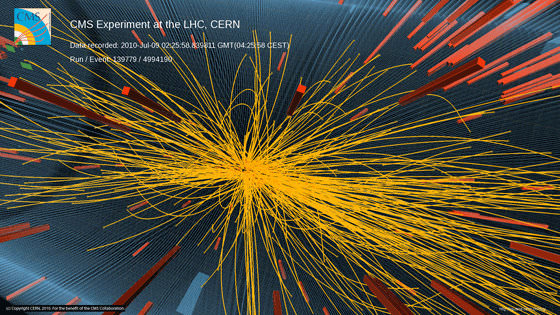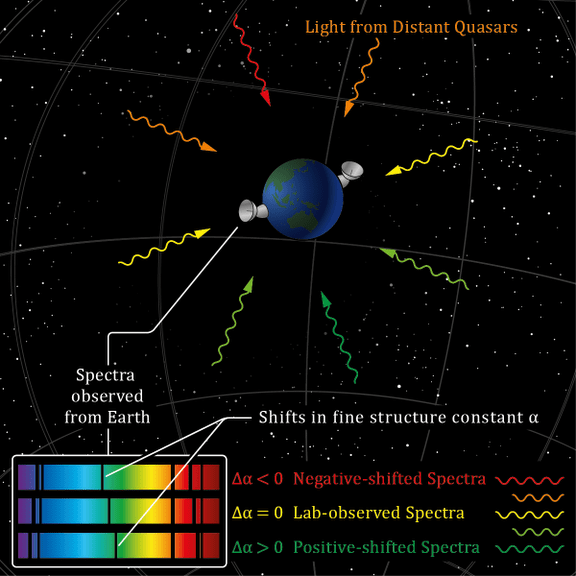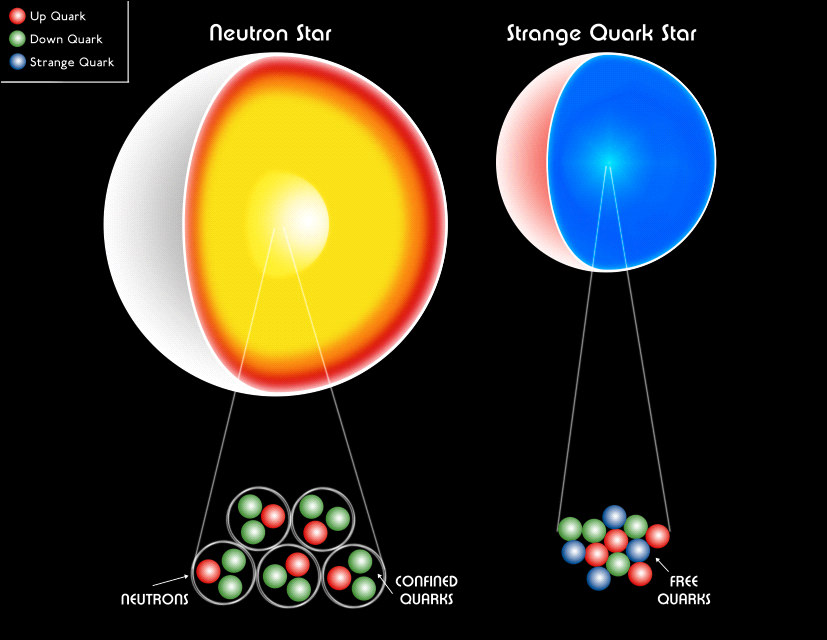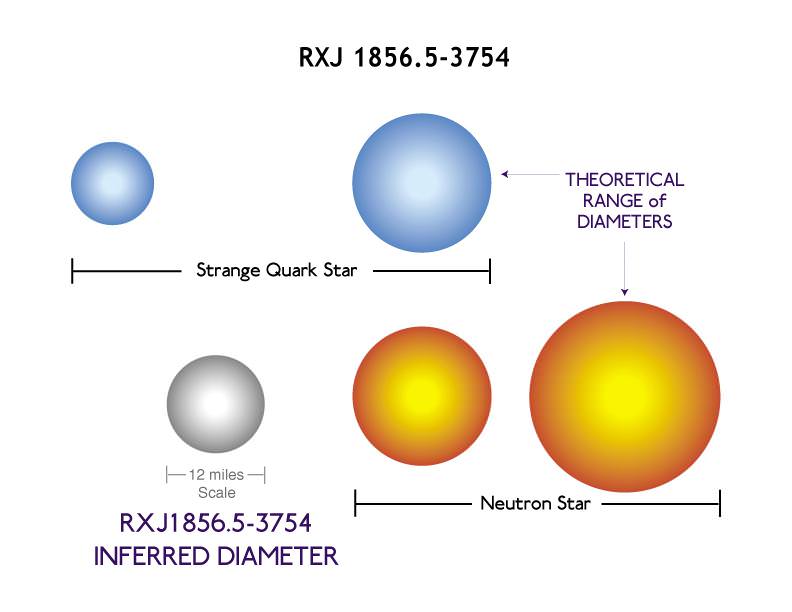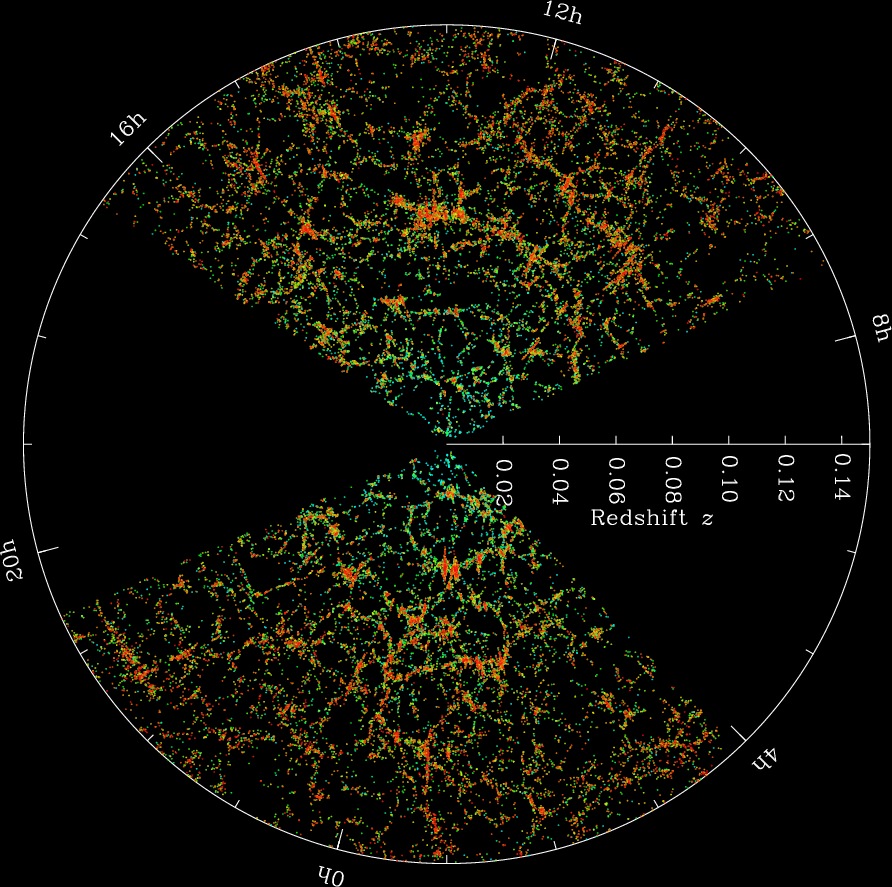[/caption]
The recent list of Universe Today’s Top 10 Stories of 2010 included the story Faster than Light Pulsars Discovered – which on further reading made it clear that the phenomenon being studied wasn’t exactly moving faster than light.
Anyhow, this prompted me to look up different ways in which apparent superluminal motion might be generated, partly to reassure myself that the bottom hadn’t fallen out of relativity physics and partly to see if these things could be adequately explained in plain English. Here goes…
1) Cause and effect illusions
The faster than light pulsar story is essentially about hypothetical light booms – which are a bit like a sonic booms, where it’s not the sonic boom, but the sound source, that exceeds the speed of sound – so that individual sound pulses merge to form a single shock wave moving at the speed of sound.
Now, whether anything like this really happens with light from pulsars remains a point of debate, but one of the model’s proponents has demonstrated the effect in a laboratory – see this Scientific American blog post.
What you do is to arrange a line of light bulbs which are independently triggered. It’s easy enough to make them fire off in sequence – first 1, then 2, then 3 etc – and you can keep reducing the time delay between each one firing until you have a situation where bulb 2 fires off after bulb 1 in less time than light would need to travel the distance between bulbs 1 and 2. It’s just a trick really – there is no causal connection between the bulbs firing – but it looks as though a sequence of actions (first 1, then 2, then 3 etc) moved faster than light across the row of bulbs. This illusion is an example of apparent superluminal motion.
There are a range of possible scenarios as to why a superluminal Mexican wave of synchrotron radiation might emanate from different point sources around a rapidly rotating neutron star within an intense magnetic field. As long as the emanations from these point sources are not causally connected, this outcome does not violate relativity physics.
2) Making light faster than light
You can produce an apparent superluminal motion of light itself by manipulating its wavelength. If we consider a photon as a wave packet, that wave packet can be stretched linearly so that the leading edge of the wave arrives at its destination faster, since it is pushed ahead of the remainder of the wave – meaning that it travels faster than light.
However, the physical nature of ‘the leading edge of a wave packet’ is not clear. The whole wave packet is equivalent to one photon – and the leading edge of the stretched out wave packet cannot carry any significant information. Indeed, by being stretched out and attenuated, it may become indistinguishable from background noise.
Also this trick requires the light to be moving through a refractive medium, not a vacuum. If you are keen on the technical details, you can make phase velocity or group velocity faster than c (the speed of light in a vacuum) – but not signal velocity. In any case, since information (or the photon as a complete unit) is not moving faster than light, relativity physics is not violated.
3) Getting a kick out of gain media
You can mimic more dramatic superluminal motion through a gain medium where the leading edge of a light pulse stimulates the emission of a new pulse at the far end of the gain medium – as though a light pulse hits one end of a Newton’s Cradle and new pulse is projected out from the other end. If you want to see a laboratory set-up, try here. Although light appears to jump the gap superluminally, in fact it’s a new light pulse emerging at the other end – and still just moving at standard light speed.
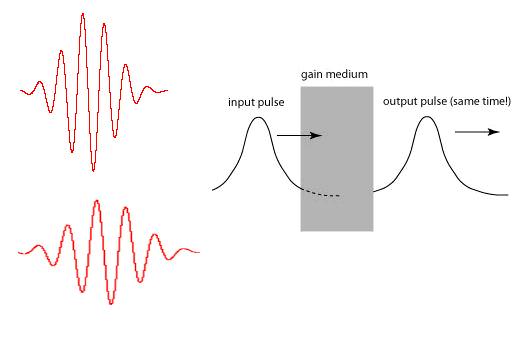
4) The relativistic jet illusion
If an active galaxy, like M87, is pushing out a jet of superheated plasma moving at close to the speed of light – and the jet is roughly aligned with your line of sight from Earth – you can be fooled into thinking its contents are moving faster than light.
If that jet is 5,000 light years long, it should take at least 5,000 years for anything in it to cross that distance of 5,000 light years. A photon emitted by a particle of jet material at point A near the start of the jet really will take 5,000 years to reach you. But meanwhile, the particle of jet material continues moving towards you nearly as fast as that photon. So when the particle emits another photon at point B, a point near the tip of the jet – that second photon will reach your eye in much less than 5,000 years after the first photon, from point A. This will give you the impression that the particle crossed 5,000 light years from points A to B in much less than 5,000 years. But it is just an optical illusion – relativity physics remains unsullied.
5) Unknowable superluminal motion
It is entirely possible that objects beyond the horizon of the observable universe are moving away from our position faster than the speed of light – as a consequence of the universe’s cumulative expansion, which makes distant galaxies appear to move away faster than close galaxies. But since light from hypothetical objects beyond the observable horizon will never reach Earth, their existence is unknowable by direct observation from Earth – and does not represent a violation of relativity physics.
And lastly, not so much unknowable as theoretical is the notion of early cosmic inflation, which also involves an expansion of space-time rather than movement within space-time – so no violation there either.
Other stuff…
I’m not sure that the above is an exhaustive list and I have deliberately left out other theoretical proposals such as quantum entanglement and the Alcubierre warp drive. Either of these, if real, would arguably violate relativity physics – so perhaps need to be considered with a higher level of skepticism.

